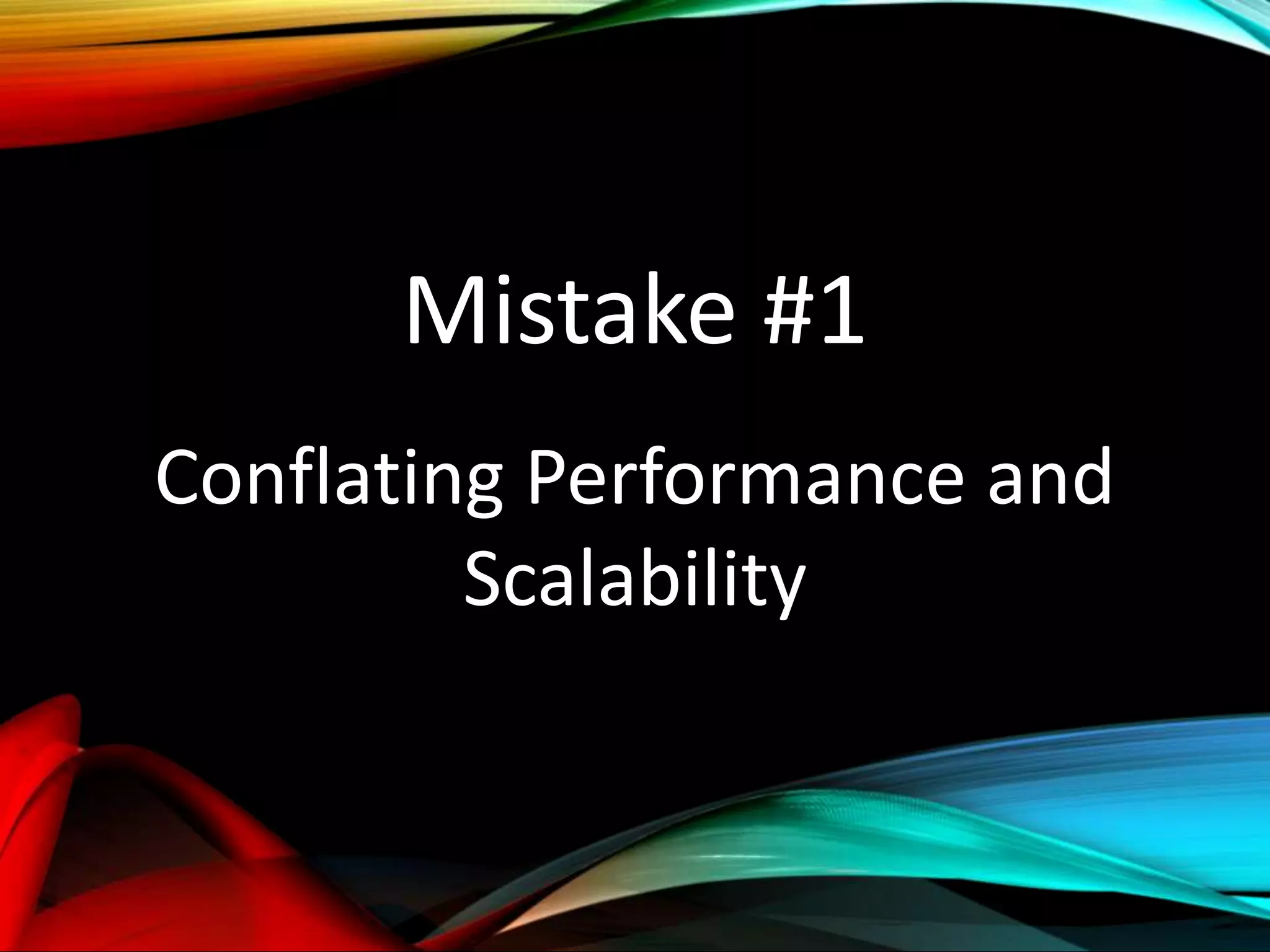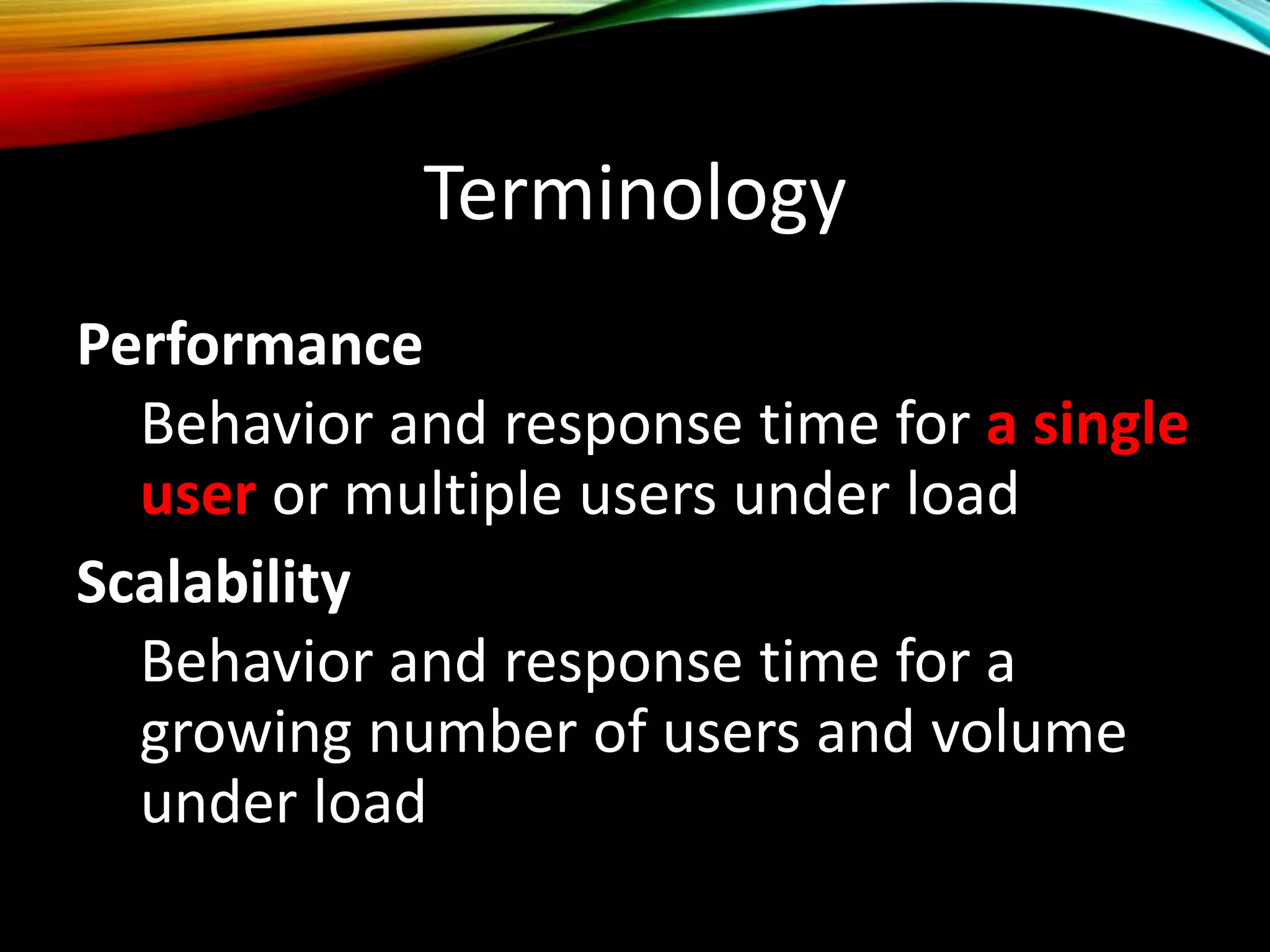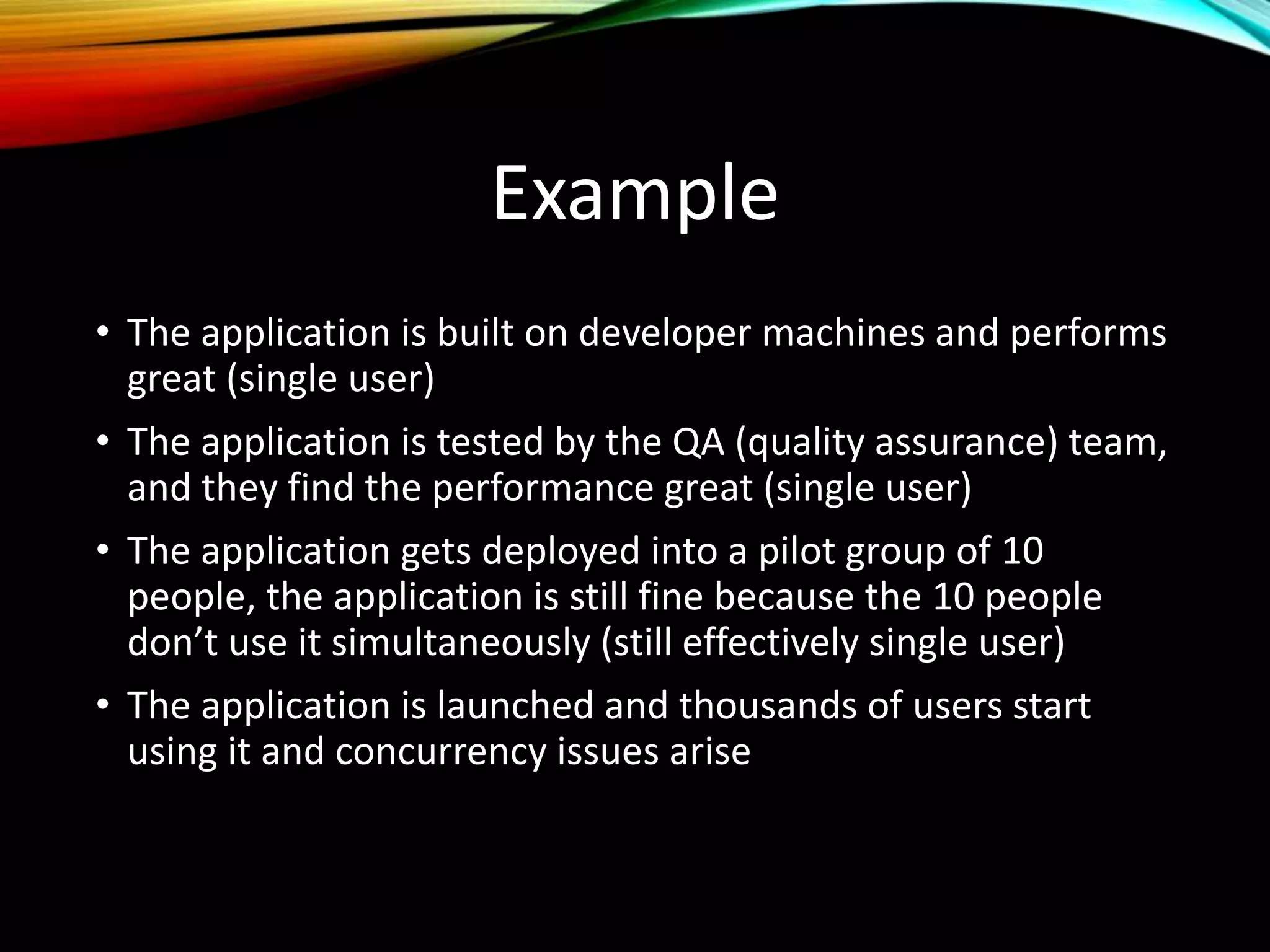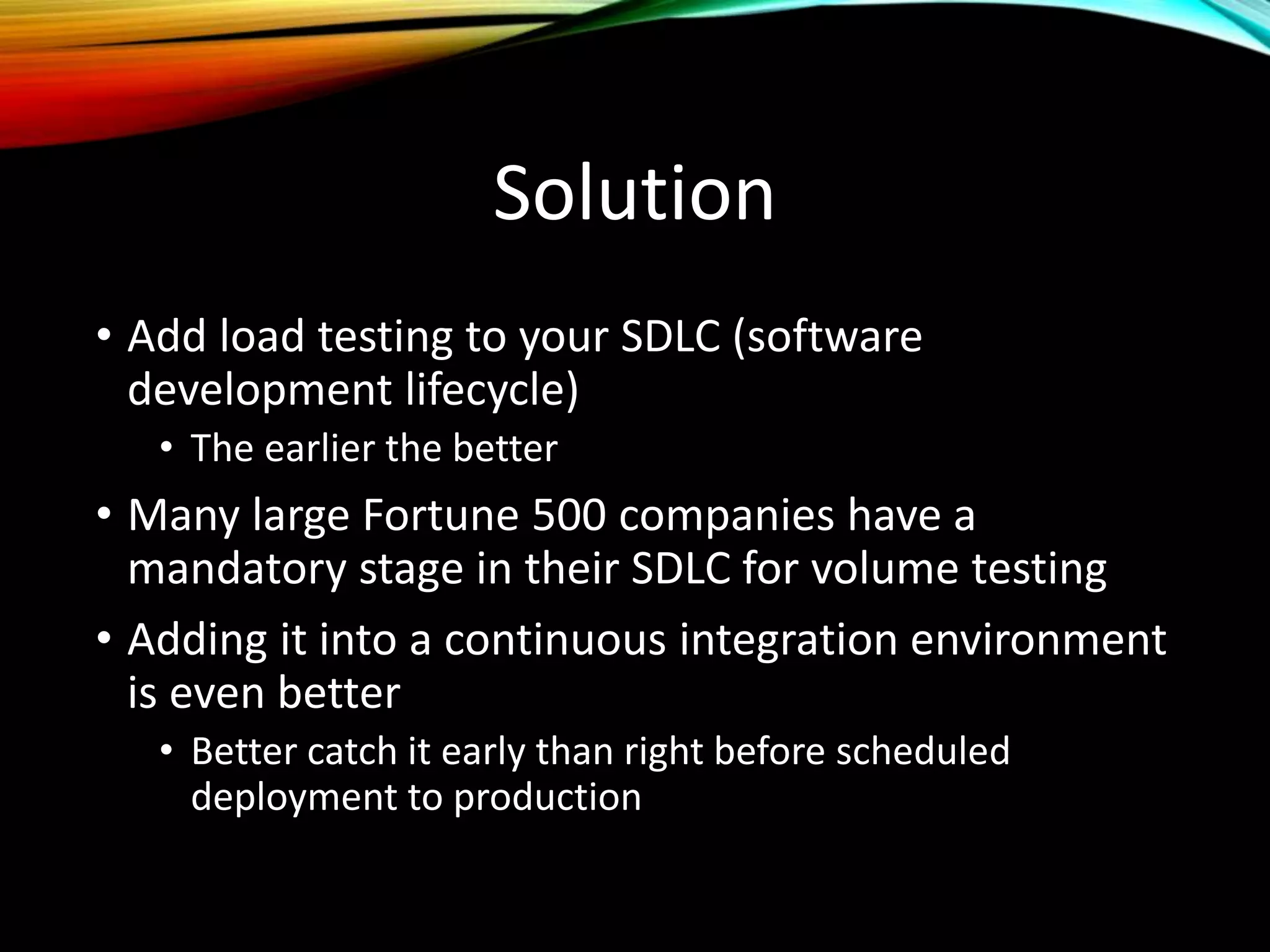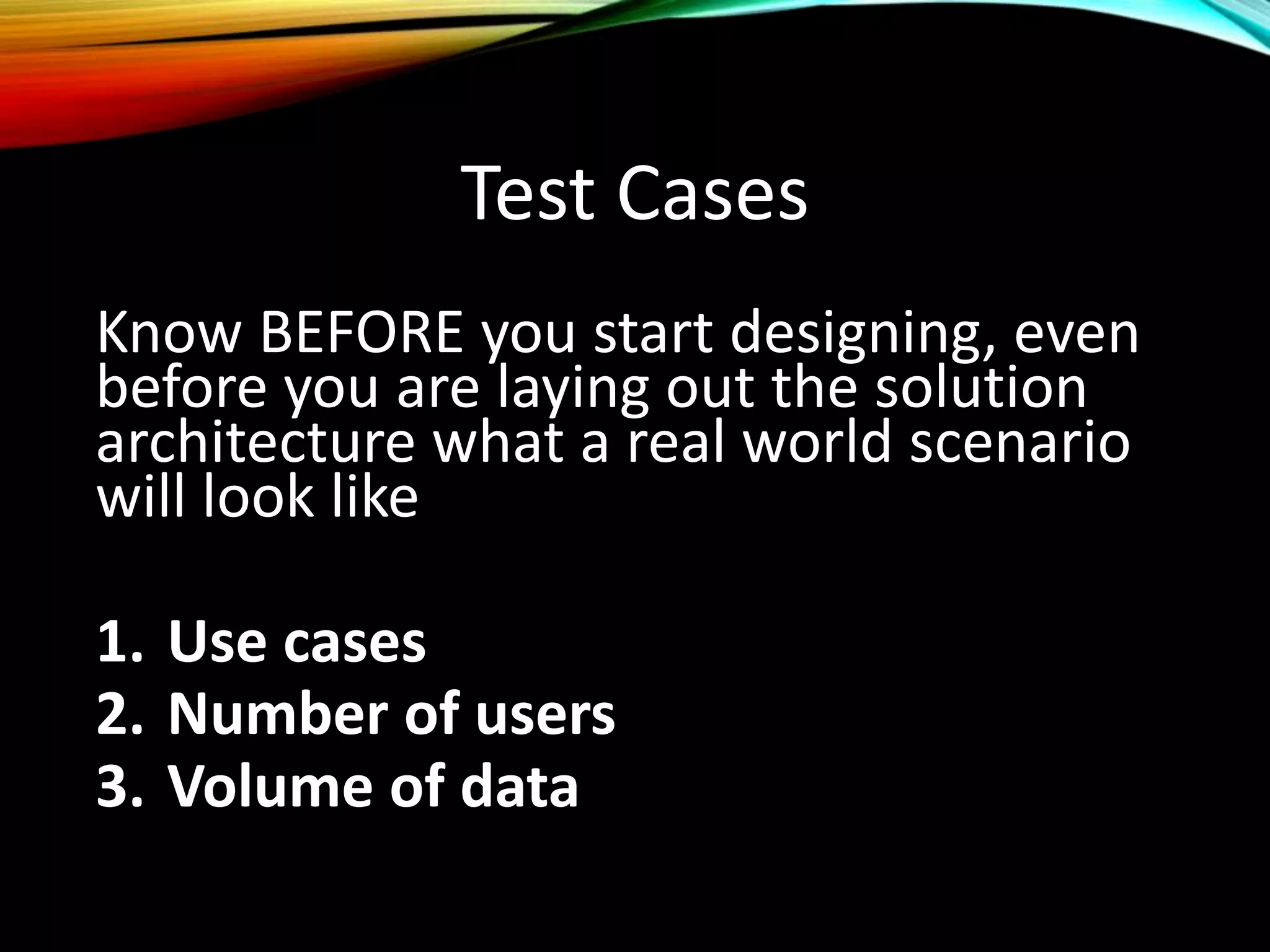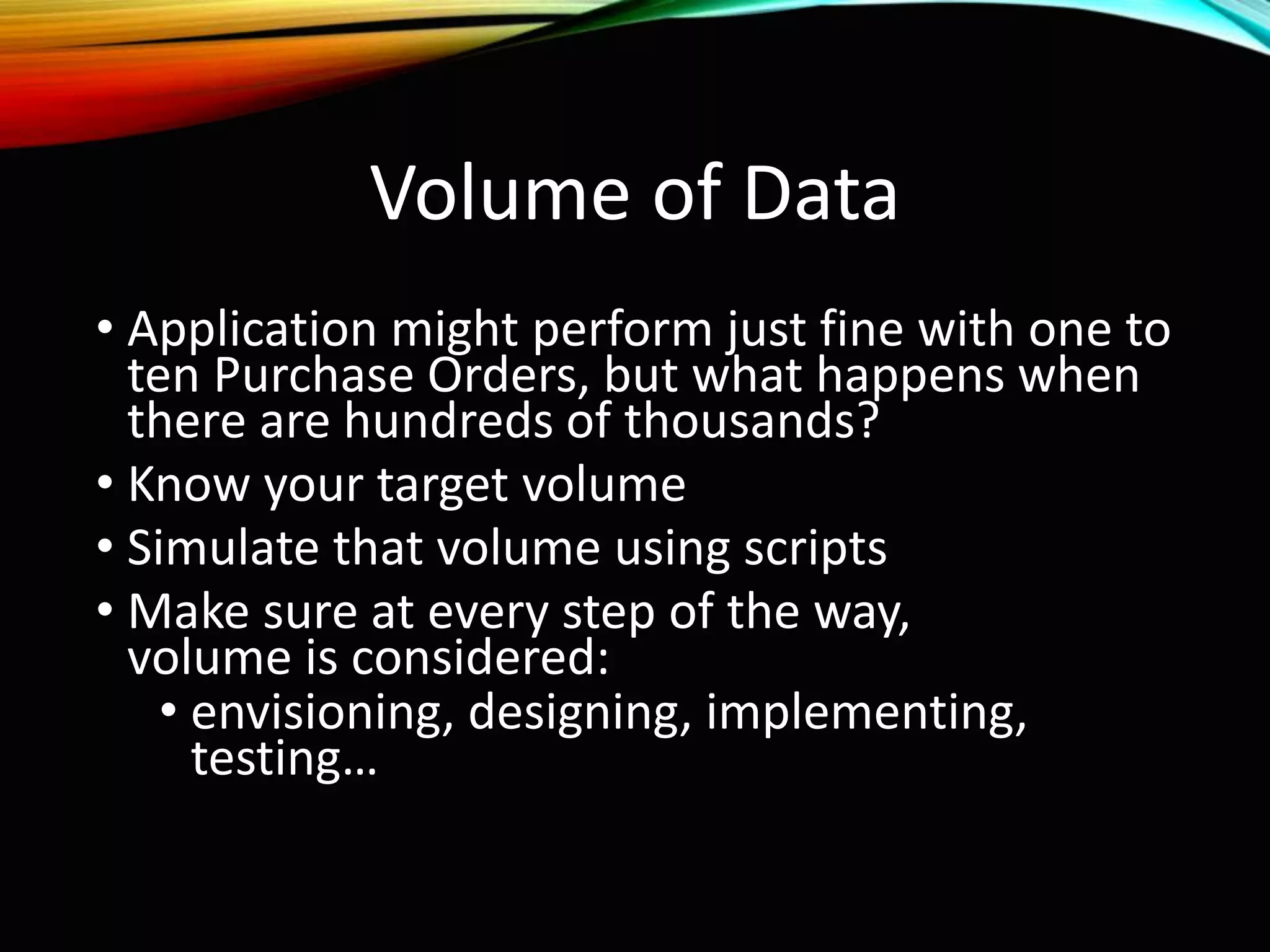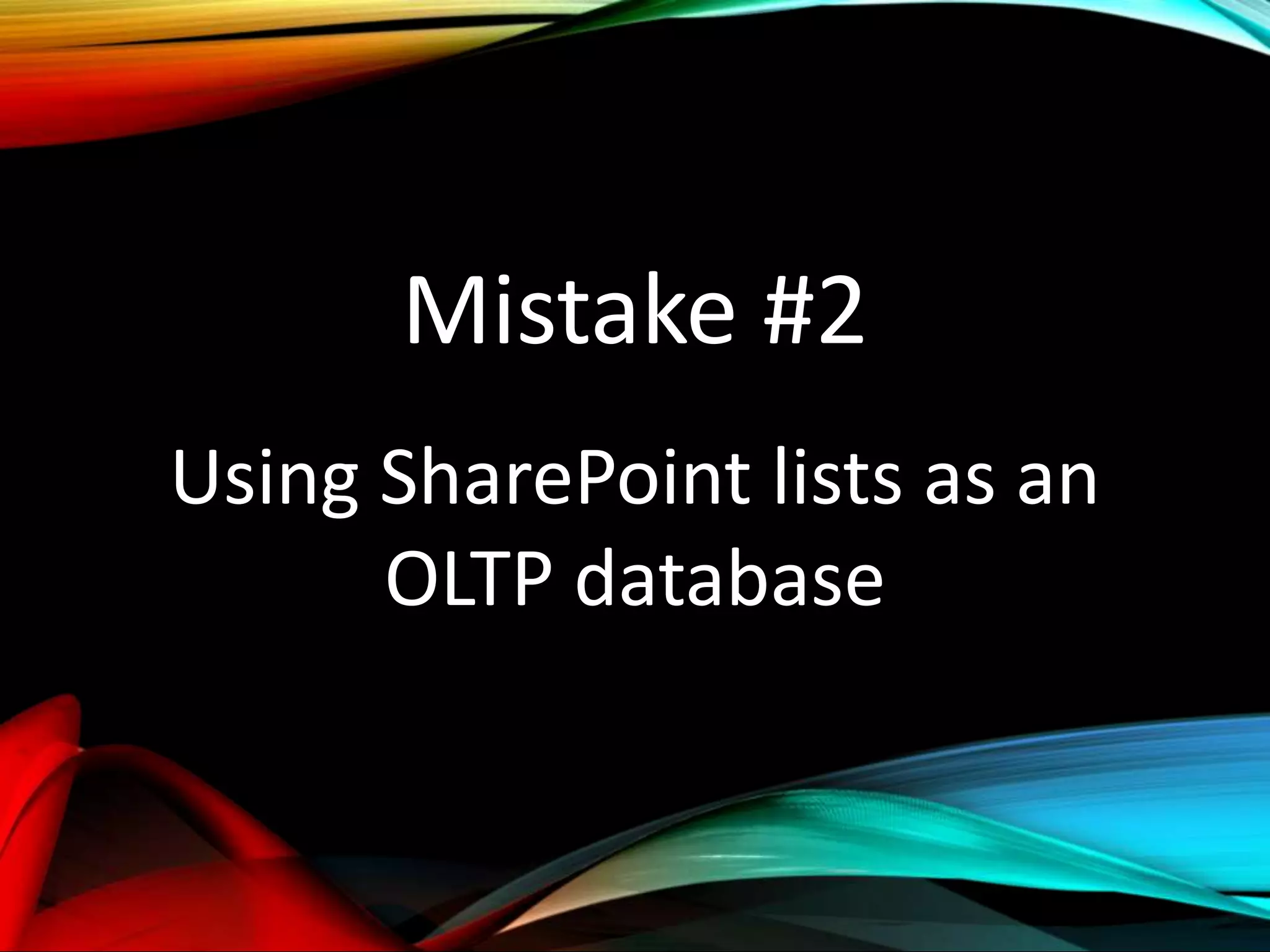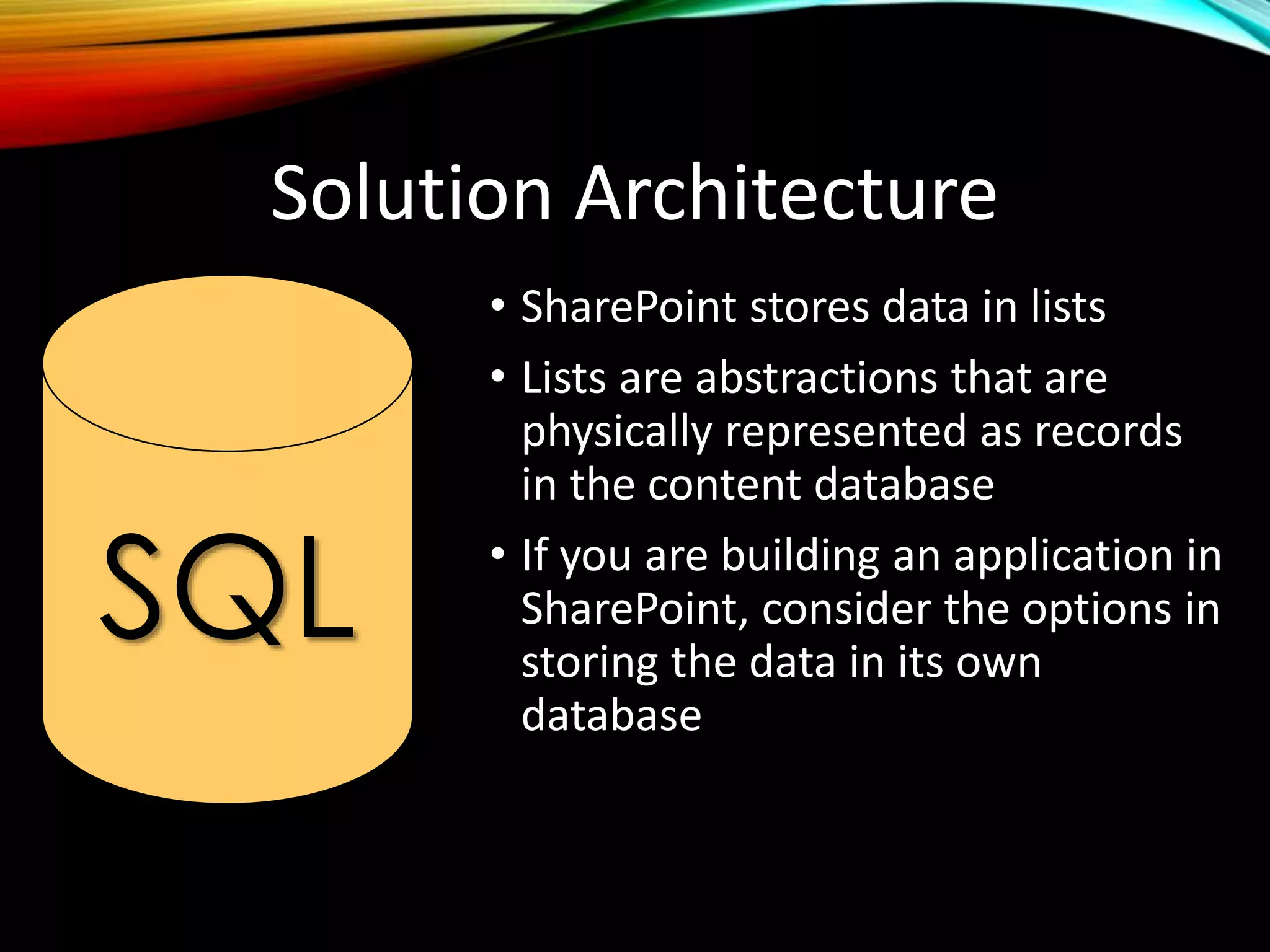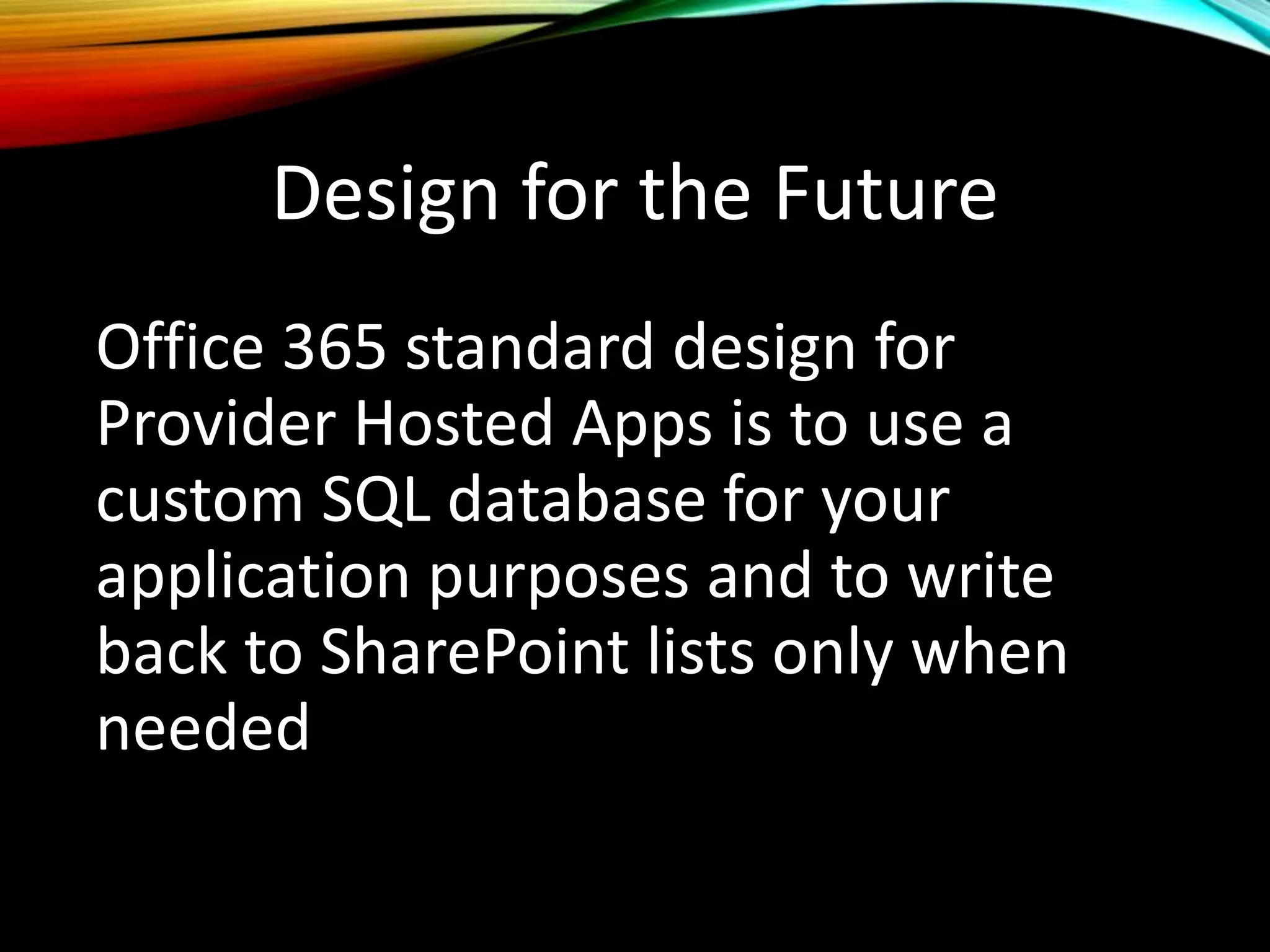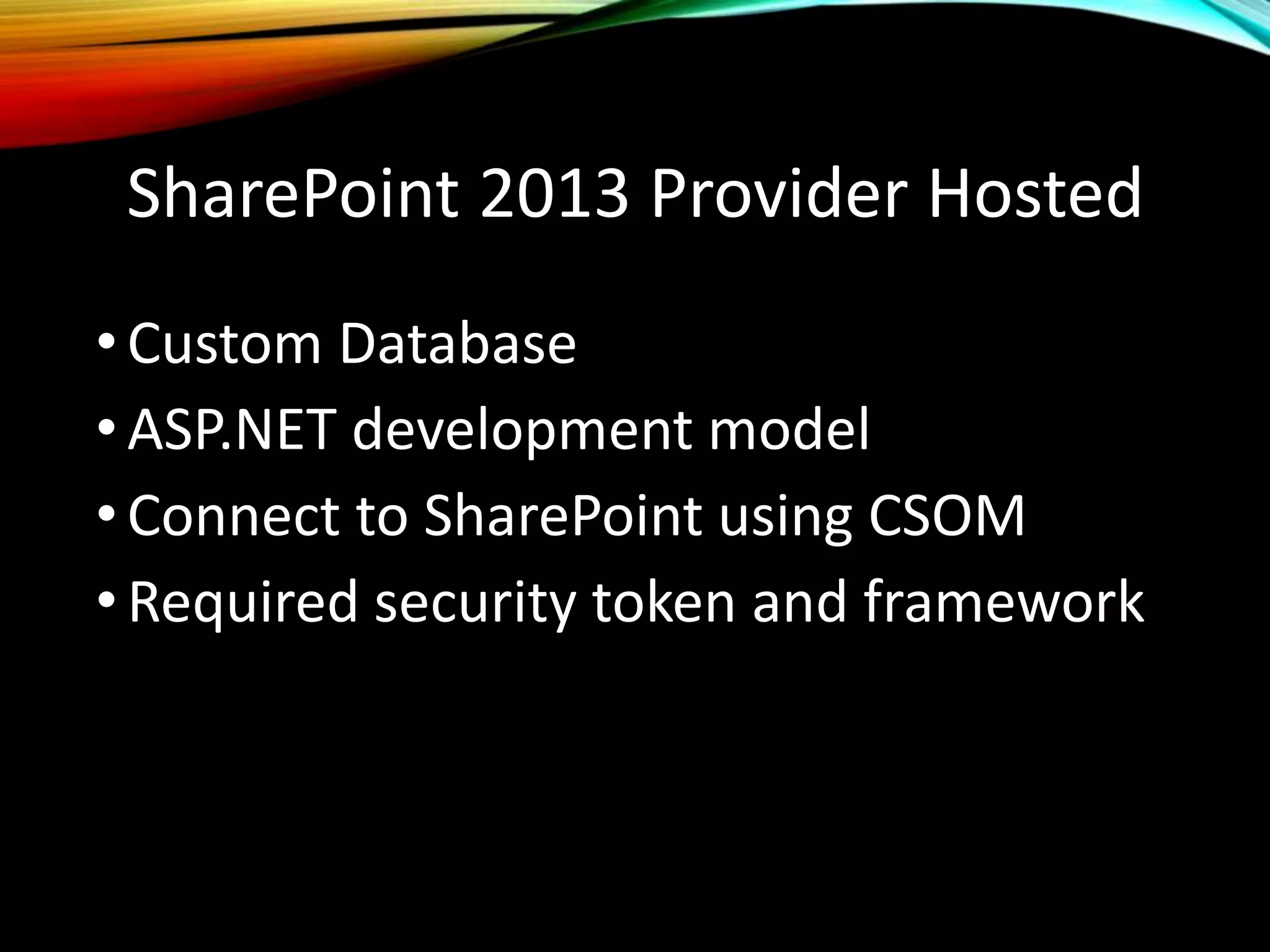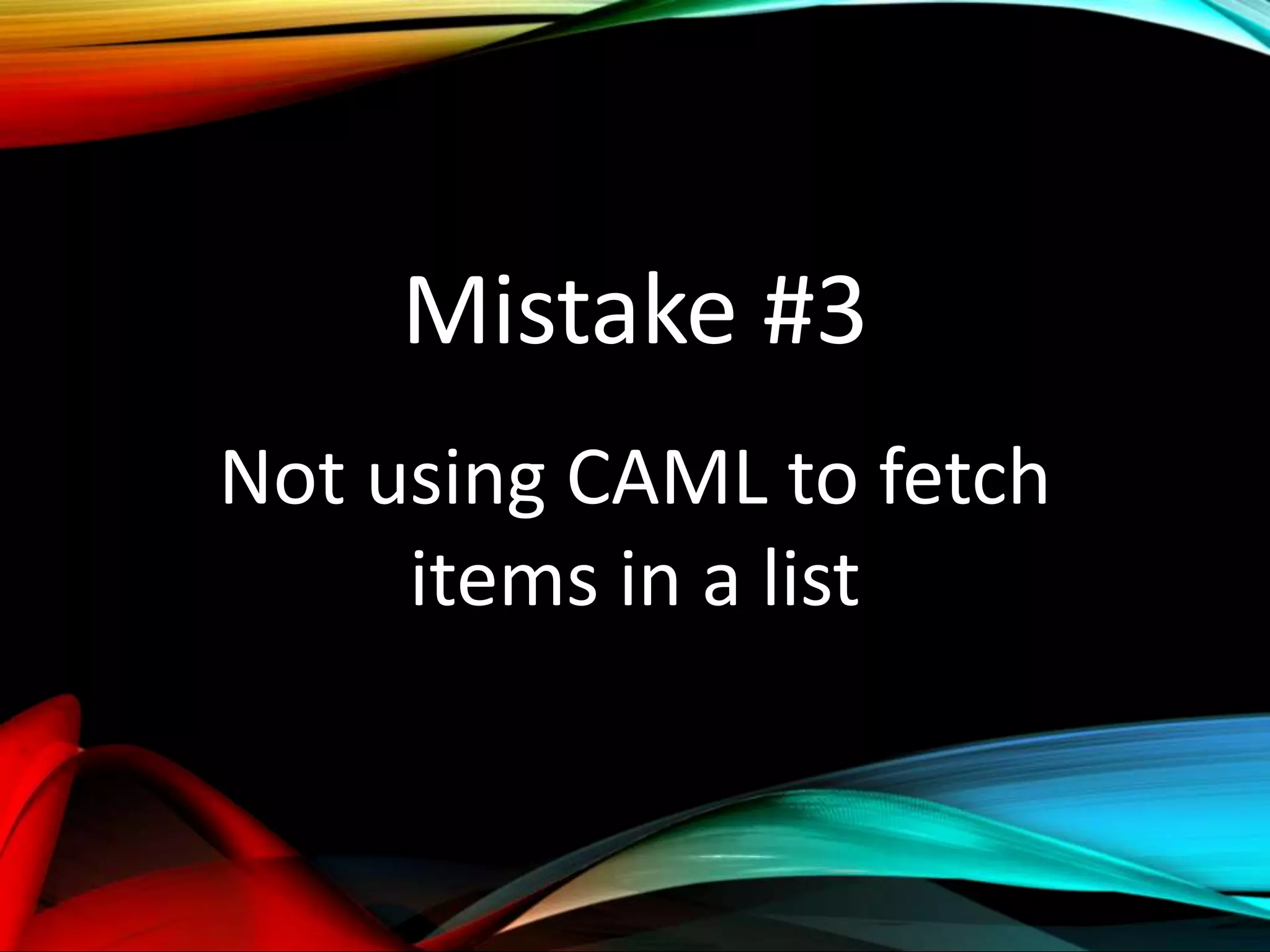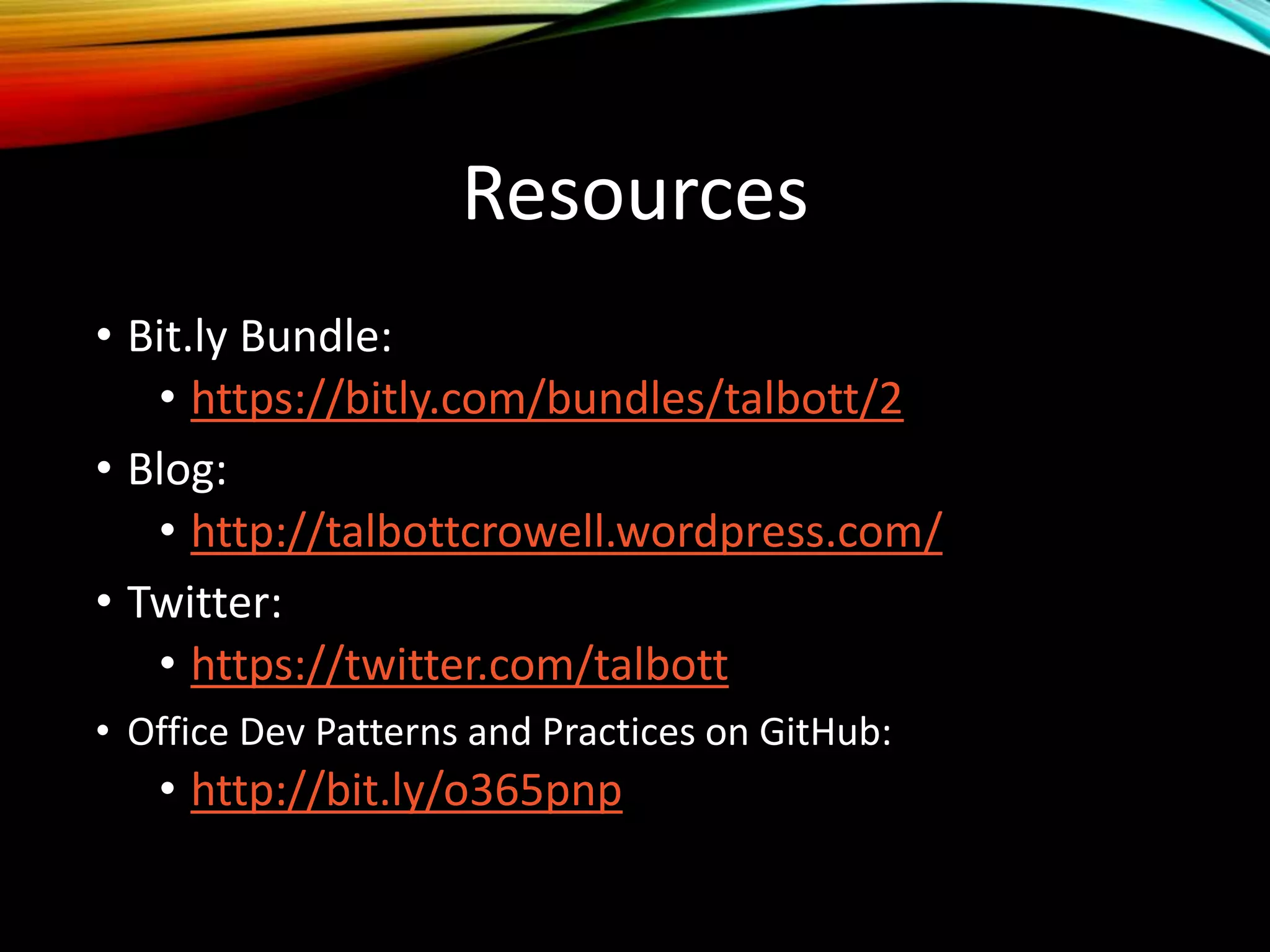The document discusses 3 common mistakes made when building scalable SharePoint applications:
1. Conflating performance and scalability and not conducting proper load testing. Performance is for a single user while scalability is for growing number of users. Load testing should be part of development process.
2. Using SharePoint lists as an operational database which is not best practice. Lists are meant for abstraction, not large transactional databases. Consider a custom SQL database instead.
3. Not using CAML (Common Application Markup Language) to efficiently fetch list items which can impact performance and scalability. The document provides recommendations to avoid these mistakes like designing for future growth and volume from the start.

